How to Prepare and Enjoy Arabic Coffee
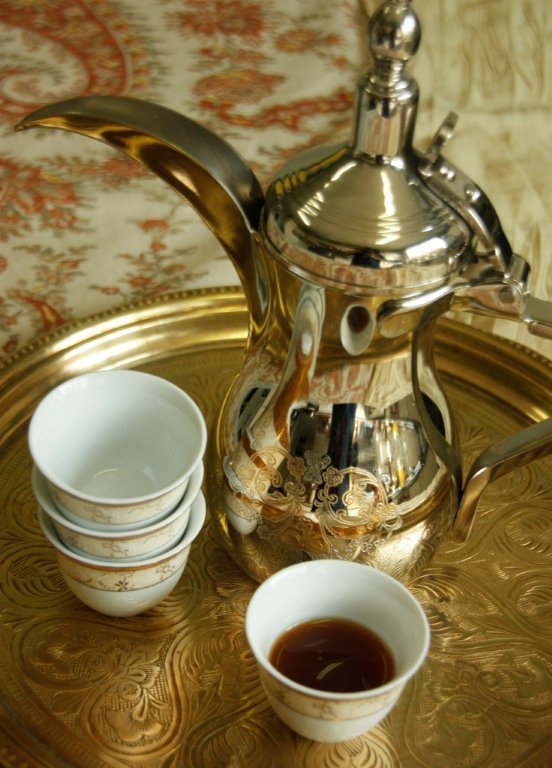 If you visit an Arab home in the UAE in celebration of Eid ul-Fitr, you’ll probably be served some version of Arabic coffee. I’m not talking about thick, dark Turkish coffee or greenish Saudi coffee. I’m referring to the coffee of the Gulf, served in small thimble-shaped cups.
If you visit an Arab home in the UAE in celebration of Eid ul-Fitr, you’ll probably be served some version of Arabic coffee. I’m not talking about thick, dark Turkish coffee or greenish Saudi coffee. I’m referring to the coffee of the Gulf, served in small thimble-shaped cups.
The first time I had Arabic coffee, I was not impressed. It didn’t taste like coffee; it didn’t even look like coffee. It was bitter and spicy. And what about the teeny tiny cups, barely half full?
But Arabic coffee grew on me. By my second Eid in the UAE I was making Arabic coffee myself. I made its most basic form: water, lightly roasted coffee, ground with cardamom and boiled for about 15 to 20 minutes—not percolated or filtered—but boiled.
Later, I learned more sophisticated variations and flavorings. I refined my method and added saffron, cloves and rose water. I discovered I not only like Arabic coffee, but I love Arabic coffee.
A Bit of Background
Originally the coffee beans were roasted on an open fire and prepared in a coffee pot (dallah), also over an open fire.
Nowadays it’s prepared on a stovetop and transferred to a stylish thermos flask, where it’s kept warm for guests. Below is an authentic dallah on the left and a themos flask on the right.
Here in the Gulf, Arabic coffee is bought at the roasters—either in the souk, at a large Arabic supermarket or even at the mall. It’s often sold at the same place where nuts and spices are sold. Normally there are four types of roasts available: Dark and Medium Turkish coffee (on the left below) or very light Saudi coffee (on the right). Second from the right is Arabic coffee, which in the UAE is also called Khaleeji (Gulf) coffee or local coffee.
Coffee is revered so much in the UAE that you sometimes see an enormous coffee pot (dallah) in the street. These roudabout coffee pots are in Abu Dhabi and Al Ain.
The dallah is such an important symbol in the UAE that a picture of one is on the dirham coin.
For Arabic coffee, the arabica beans are lightly roasted and lighter in color than what we see in North America. With the addition of cardamom, the coffee takes on a green hue (but it’s not as green as Saudi coffee).
Note: sometimes “Turkish coffee” and “Arabic coffee” are used interchangeably, but they are different. Turkish coffee is dark and thick, with foam on top and grounds at the bottom. It’s often sweet when Arabic coffee is never sweetened.
How to Prepare Arabic Coffee
A good ratio is 1 Tablespoon ground coffee per cup of water. If you like cardamom, 3 parts coffee to one part cardamom is good ratio to start, and you can adjust to taste. The cardamom can be ground with the coffee (the easiest method) or crushed cardamom can be added near the end of cooking. If you like extra cardamom, you can do both.
In addition to the cardamom, other flavorings are cloves (added toward the end of the cooking process) as well as saffron and rose water (added to the thermos flask). Some say you can use cardamom with cloves or with saffron and rose water. I like to use all four!
Sugar and milk are never added. However, Arabic coffee is typically served with something sweet on the side, usually dates.
3 cups water
3 Tablespoons Arabic coffee, coarsely ground
1 Tablespoon cardamom (or to taste) either ground or crushed with a mortar
5-6 whole cloves (optional)
small pinch saffron (optional)
1 teaspoon rose water (optional)
Method
1.Bring water to boil in a dallah. If you don’t have one, simply use a medium saucepan. I like to use a long-handled coffee pot (used for Turkish coffee) because it’s easy to pour from.
2. When the water boils, add the ground coffee (and ground cardamom if it’s mixed with the coffee). Boil for 10 to 12 minutes.
3. Add crushed cardamom and cloves—if you are using them. Stir once and boil for another 5 minutes.
4. Meanwhile, pre-heat a thermos flask with boiling water. Don’t forget to remove the hot water before adding the coffee.
5. Remove coffee pot from heat, cover and let coffee grounds settle to the bottom for a minute. Do not stir.
6. Add the rose water and small pinch of saffron to the empty themos flask. Strain and pour the steaming coffee into the flask.
7. Allow to seep for 5 to 10 minutes before serving. Enjoy!
Arabic Coffee Etiquette
Arabic coffee is entrenched in hospitality, tradition and ceremony. In the Gulf, coffee is served in a small delicate cup (finjaan). The coffee is served and received with the right hand. The cup is only filled half full or less—so it cools quickly.
To be gracious, the guest should accept at least one cup. It’s standard to accept three. A swish or jiggle of the cup shows that you are finished. Meanwhile, all this pouring insures that the host is kept busily focused on his or her guests.
Arabic coffee can be served any time. It’s served in the home, at social gatherings or business meetings. In Dubai, you might even be served Arabic coffee at the mall.
Questions: How do you prepare your Arabic coffee? What is your impression of Arabic coffee?
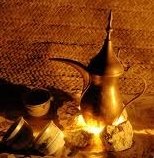
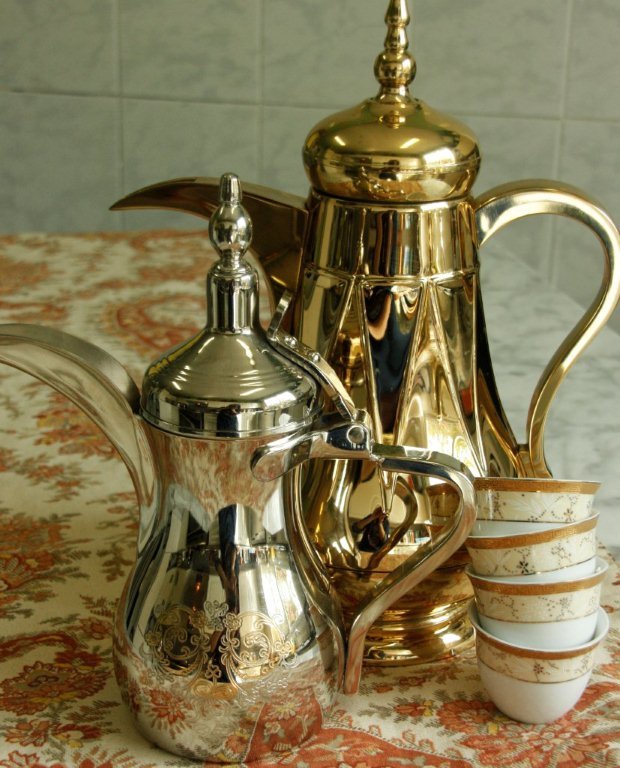
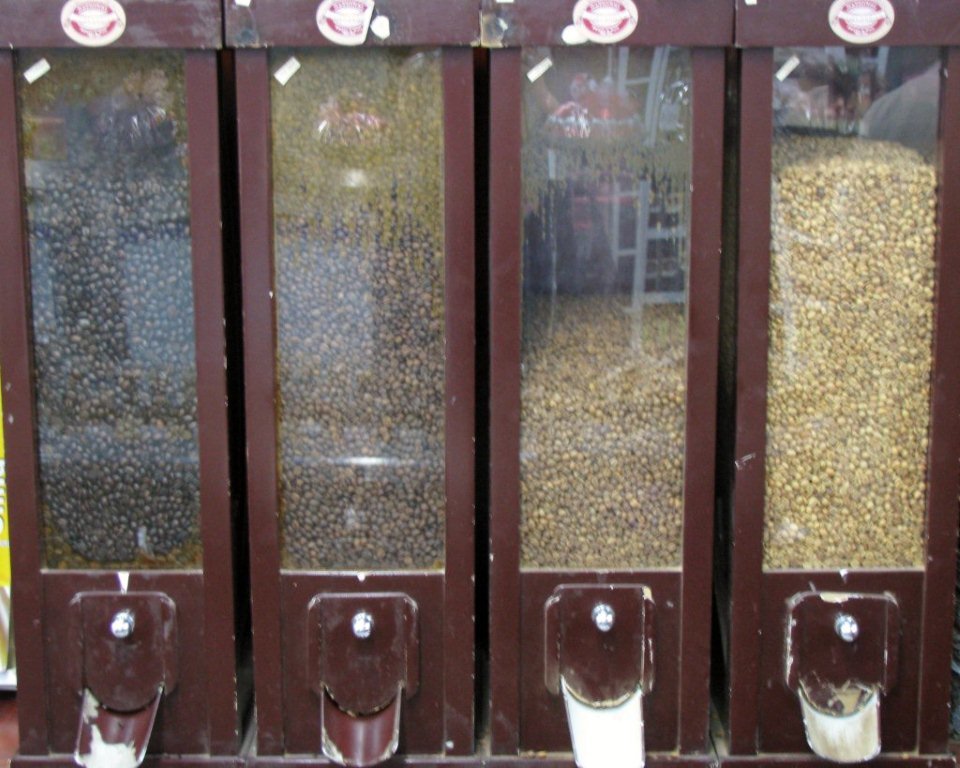

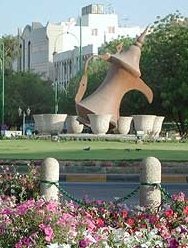

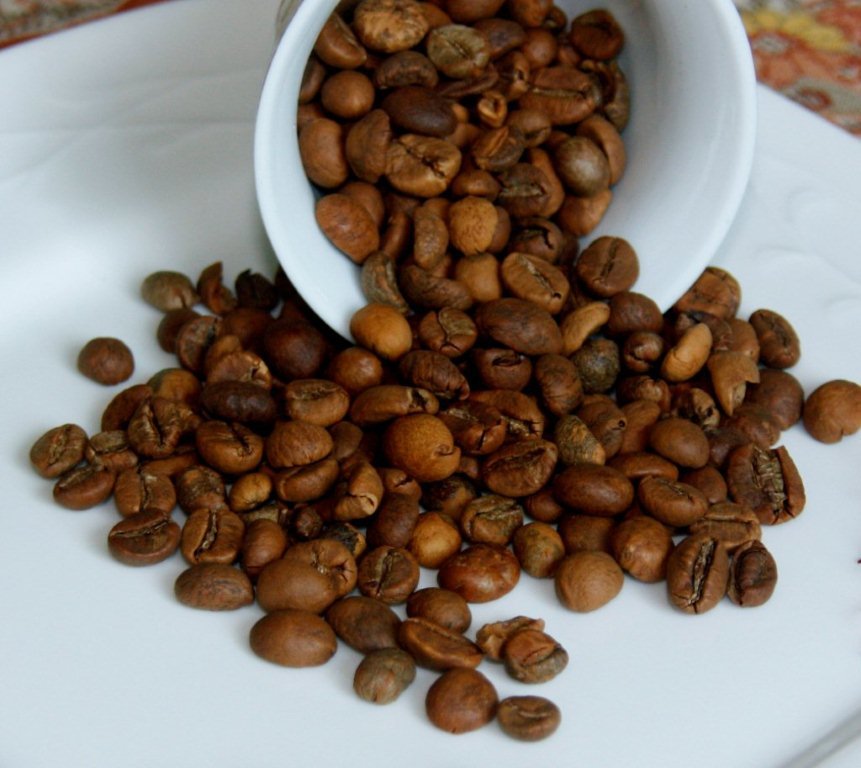
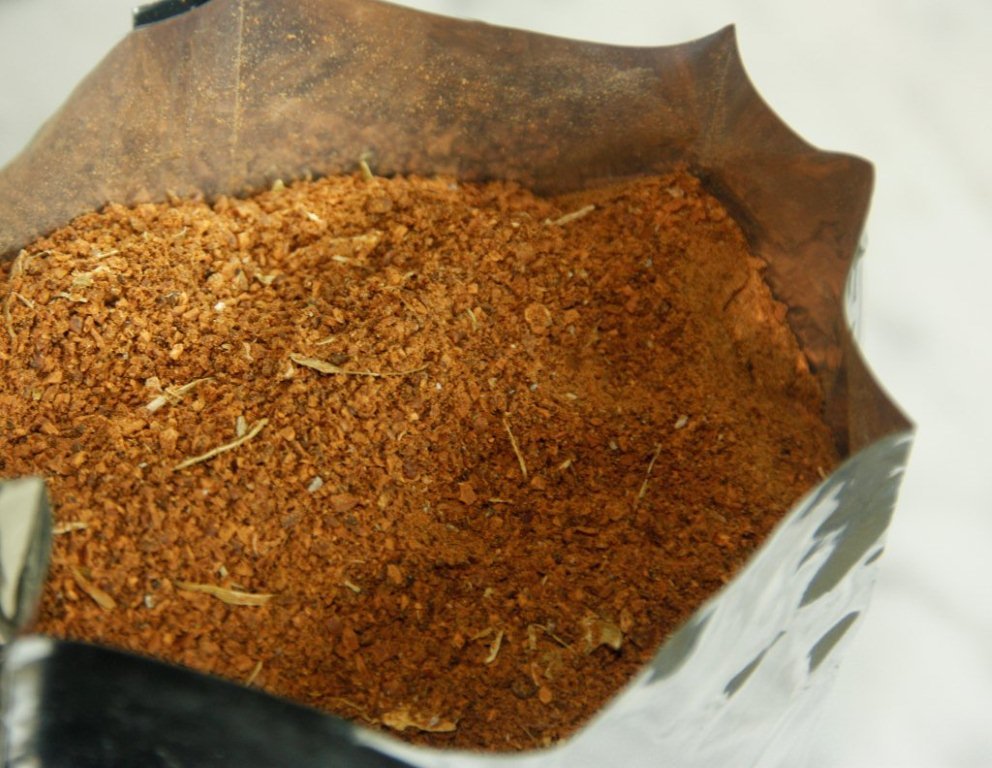
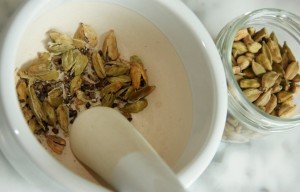



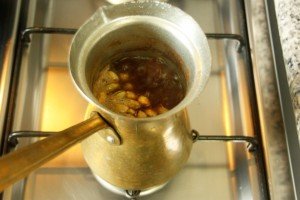

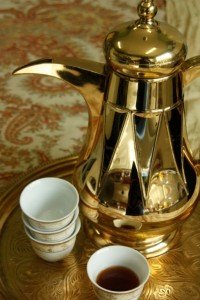
 Follow
Follow
I loved this post, Holly. You always know how to explain things to me so I understand. Thank you!
Excellent article. I had no idea in the difference of Turkish or Arabic coffee and certainly not how it is prepared. Thank you for writing this fascinating and educational(in a good way:) ) piece. And thanks to Jo Hanna Harness for Tweeting this!
Caroline
Fascinating. I love the beautiful coffee pots and the pretty little cups. Think I’ll stick with my dark roast drip though, lol.
Gorgeous! I found myself inhaling deeply through my nose reading this post…. Hoping my iPad might smell as beautiful as you made it look. Eid Mubarak!!
Thank you for stopping by and taking the time to read. Today was the first day of Eid and I spent my evening preparing, serving and drinking this coffee! I really associate it with the holiday. Wish I could serve you some. Thanks for your comments–they are much appreciated.
Wonderful photos, Holly. This took me back to the streets of Constantine. There was one street where coffee was ground. I never knew the name of it, but I only had to say ‘the coffee street’ and everyone knew what I was talking about. Eid Mubarak. 🙂
You have certainly adapted to your new homeland (after all, it’s been 10 years since you moved there!). My days with you were spent over mint tea. I guess I need to visit the Gulf! Happy Holiday, to you and your family!
thank you, thank you, thank you. I was worried I wouldn’t find this when at first repeatedly returned info on turkish coffee. I returned from a year of work in Abu Dhabi, and brought with me Arabic coffee beans and cardamom, but had forgotten the ratios. I so appreciate your variations and detail and photos.
I find it interesting that you say that sugar is never added to Arabic coffee…yet I’ve only rarely had Arabic coffee that wasn’t sweetened 🙂
Hi Angela. Thanks for reading! I’m writing here about the coffee that is served in the Gulf–normally unsweetened with a date served on the side for sweetness. However, Turkish coffee (enjoyed by the whole Arab world) is nearly always sweetened with sugar. There are so many variations on this drinks that it’s hard to make sweeping generalizations. There is a Turkish saying that I love: “Coffee should be black as hell, strong as death, and sweet as love.” 🙂
Holly, thank you for posting this recipe for Arabic coffee. I was in Dubai on vacation in December and bought the coffee and the kettle but did not know how to actually make the coffee. I will make it today! 🙂
Sara, Oh, so glad this post is of use to you! Thanks for stopping by & commenting. Much appreciated. 🙂
My brother suggested I might like this website.
He was entirely right. This post on Arabic coffee truly made my day.
Hallo Holly. This summer I visited Jordan with my Jordan friends. I loved the coffee. I had it in small cups as you discribed without sugar, but also with sugar. I brought the coffee with me to Holland and everyone is enjoying it. Now I understand that I have to boil it longer and I think that the taste will be even better. I also have seen your recept for maqluba and the arabic salade. I will prepare it this weekend and we will enjoy the taste of Jordan in my home in Holland. Thank you!
HI Dita,
Forgive my slow response … Thank you so much for your lovely comment. I’m glad that you had a memorable trip to Jordan & that you find the recipes useful. Happy cooking & all the best to you, Holly